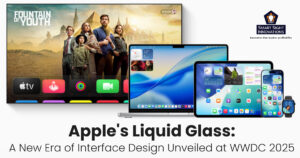 In the fast-paced realm of web development, innovation is a driving force that shapes the digital landscape. Among the many groundbreaking advancements, design systems have emerged as a game-changer, revolutionizing the way websites and applications are designed, developed, and maintained.
In the fast-paced realm of web development, innovation is a driving force that shapes the digital landscape. Among the many groundbreaking advancements, design systems have emerged as a game-changer, revolutionizing the way websites and applications are designed, developed, and maintained.
If you’re a web developer or designer, understanding the ins and outs of design systems is essential to stay ahead of the curve and deliver exceptional user experiences.
Design systems establish a cohesive visual language, ensure consistent branding, and foster seamless collaboration among cross-functional teams. From tech giants to budding startups, design systems have revolutionized the way websites and applications are built and maintained.
In this article, we explain how these systems enhance efficiency, scalability, and maintainability, allowing you to build digital products that stand the test of time.
What Is a Design System?
A design system is a comprehensive collection of design elements, guidelines, principles, and assets that work together cohesively to create a consistent and unified user experience across digital products and platforms. It serves as the foundation for design and development teams, providing a set of reusable components and standards that streamline the process of creating user interfaces.
At its core, a design system aims to establish a shared language that ensures all members of a cross-functional team, including designers, developers, product managers, and stakeholders, are on the same page when it comes to the look, feel, and functionality of a product. It goes beyond just visual elements, encompassing interactions, accessibility guidelines, and even tone of voice for written content.
Elements of Design System
A design system is a comprehensive collection of elements that work together to create a consistent and cohesive user experience across digital products and platforms. These elements form the foundation for design and development teams, providing guidelines and standards that streamline the process of creating user interfaces. Some key components that constitute a well-rounded design system include:
1. Design Principles
Design principles are the fundamental philosophies that guide the overall approach to design within the system. They serve as a compass, influencing decision-making throughout the design process. These principles could include simplicity, consistency, accessibility, user-centricity, and more. By establishing a set of core principles, the Design System ensures that all products and features share a common design ethos.
2. Brand Guidelines
Brand guidelines are an integral part of a design system, encompassing the visual identity of the organization. This includes the logo, color palette, typography, and other visual elements that represent the brand. Incorporating brand guidelines ensures a consistent and recognizable brand presence across all products and interactions.
3. UI Components
UI components are the building blocks of a user interface. These include buttons, forms, navigation bars, cards, modals, and various other interface elements. Design systems create reusable and standardized UI components, ensuring consistency and efficiency in the design and development process. By using predefined components, designers and developers can focus more on creativity and problem-solving rather than reinventing the wheel.
4. Layout and Grid Systems
A well-defined layout and grid system contribute to the overall visual structure of a product. Design systems establish grids, spacing rules, and alignment guidelines that create harmony and balance across different screen sizes and devices. This helps maintain consistency and coherence in the layout, resulting in a visually pleasing user experience.
5. Icons and Illustrations
Icons and illustrations play a crucial role in communicating ideas and guiding users through an interface. A design system often includes a library of consistent and recognizable icons and illustrations that contribute to the overall visual language of the product.
6. Design Tokens
Design tokens are variables that store design-related attributes such as colors, typography values, and spacing units. These tokens enable consistency by allowing designers and developers to reference and update design attributes from a centralized source. This facilitates quick and easy changes across the entire system.
7. Documentation
Comprehensive documentation is a vital component of a Design System. It includes guidelines on how to use each component, the rationale behind design decisions, accessibility best practices, and code snippets for developers. Well-documented Design systems facilitate adoption and collaboration, ensuring that team members can work efficiently and consistently.
Benefits of Design Systems
A well-structured and well-implemented design system can provide numerous benefits to a design system.
-
Scalability
Many businesses encounter challenges when scaling products and services. An irregular rise in effort is one such fundamental problem which occurs frequently during the development and maintenance process. You can produce more goods with a design system instead of rapidly expanding the team.
A design system lets you build more products by centralizing designs, UI decisions and alignments. It helps with its set of universally used design and coding decisions and can easily adapt to different projects. As a result, you’ll be able to produce designs more quickly and accurately, which will help you save both time and money.
-
Speed
By eliminating decisions about aspects such as what font to use, where to put a button or how a help message should look, design tools assist teams in completing projects quickly. For more effective workflows and a lower reliance on designers, team members use approved design procedures and components to complete their design work.
-
Consistency
A design system establishes and standardizes patterns to maintain consistency across all product teams. This consistency simplifies the use of design items and enhances visual quality as all your products employ the same patterns.
For instance, when users connect with your business, they do not understand that several features inside an app are created by various teams within your organization. They anticipate that they would function the same way as other apps and start searching for this pattern.
Reusing the same features lessens friction and mental effort, resulting in improved conversion and a better user experience. Thus, encouraging people to prefer your software over the one from a rival.
-
Continuous Improvement
Product maintenance is simplified by the centralized structure of design systems. All items immediately benefit from fixes and enhancements made to the design system. Changes in the UI occur frequently for different reasons. It could either be to optimize conversion after the A/B test or to update the brand or the OS.
Component updates impact all products, whereas changes to business logic are frequently limited to a single product. The problems can be significantly minimized by externalizing the UI to a centralized design system.
Updating products can be accomplished extremely quickly using a combination of parts and design tokens. Externalizing fundamental UI choices to a third party relieves the product team of this responsibility.
-
Code and Design Quality
A design system that is used by all will be of the greatest quality if designers and developers interact full-time with it. The user experience will be optimized by designers as they work through all edge scenarios. A component can be extensively tested, accessible and modifiable by developers.
-
UX Design
The user experience is enhanced by good UX design through visual cues including recognizable user interface patterns and uniform fonts, space, colors and graphics. These design signals reduce cognitive stress and enable a more enjoyable user experience.
Engineers and designers integrate their understanding of UI design concepts and UI elements into design systems so that other team members can use those standards to apply to their ideas.
Design systems that can assist, operationalize and improve your design efforts are made up of numerous elements, patterns, styles and principles. The size and dependability of your projects, along with the available materials and time are essential aspects to take into account while developing a design system.
Design systems can become complex collections of parts and code when created and maintained incorrectly, but when done well, they can train team members, improve operations and give designers the tools they need to solve challenging UX issues.













